What you need to know about prediabetes
If you find out you have prediabetes, use the diagnosis as motivation to get healthy. Prediabetes, as you may know, dramatically raises your risk of developing type 2 diabetes. But it’s not too late for you to change course. If you lose just 5 to 7 percent of your current body weight, you can reduce the chances of being diagnosed with type 2 diabetes by up to 58 percent, according to the Centers for Disease Control and Prevention (CDC).
If you’re overweight and need to slim down, cutting calories is a must, says Sacha Uelmen, RDN, a certified diabetes educator, director of nutrition for the American Diabetes Association, and spokesperson for Managing Type 2 Diabetes for Dummies. But you also need to be mindful of the impact that specific foods have on your blood glucose level. In other words, you need to start eating as if you already have diabetes. (Don’t make one of these prediabetic diet mistakes when trying to lose weight.)
As daunting as that might sound, people on a prediabetes diet (as well as those with diabetes) can eat pretty much anything they want, provided they watch portion sizes and follow a generally healthy, well-balanced plan. “When you tell someone they can’t have a particular food at all you create a monster,” says Marina Chaparro, RDN, a clinical dietitian, certified diabetes educator, and spokesperson for the Academy of Nutrition and Dietetics. For that reason, people with diabetes can even eat pizza and ice cream. (Here’s some advice on how to reverse the effects of a sugar binge, should you overindulge.)
While eliminating foods isn’t wise, you should remember that you can’t eat pizza and ice cream every day either. Those foods ought to be occasional treats rather than staples. What else makes the “eat less of” list? These other foods might surprise you. Here’s a look at a prediabetes diet food list of things you shouldn’t eat. (And be sure to read up on what you should do to prevent prediabetes from developing into full-blown diabetes.)
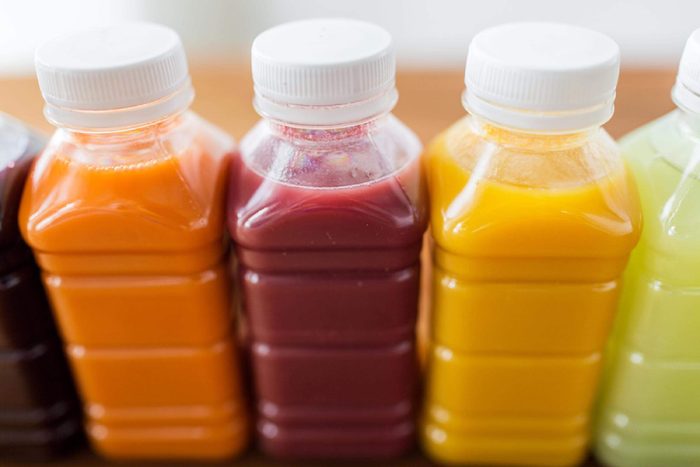
“Detox” juices and smoothies
Yes, they’re loaded with fruit, but they’re also loaded with sugar (even if it is the natural kind). Plus they’re missing the key ingredients of protein and fiber, which help keep your blood sugar steady. “People like them because they think they’ll help them lose weight, but these drinks are often high in calories and really concentrated in sugar, which makes your pancreas work harder,” says Chaparro. Her advice is to ditch these drinks in favor of whole fruit. (Several studies now support that people with diabetes can eat fruit.)
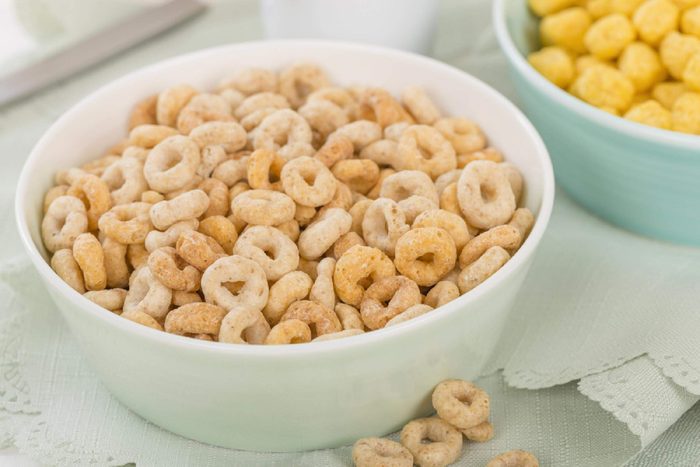
Cereal
Yes, it’s an easy go-to breakfast, but most cold cereals lack adequate protein and fiber. That’s especially problematic first thing in the morning, says Chaparro. “When you wake up you can have a little more insulin resistance”—your body isn’t using insulin as effectively as it should, she explains. Highly-refined grains, like those found in most popular breakfast cereals, only compound the problem.
For a morning meal that’s more satisfying and more suitable for someone on a prediabetes diet, try some whole-grain oatmeal (you digest it more slowly) and top it with almonds for protein. For even more protein power, try adding a scrambled or hard-boiled egg on the side. (Still want some cereal? Here are some healthy cereal choices that nutritionists love.)
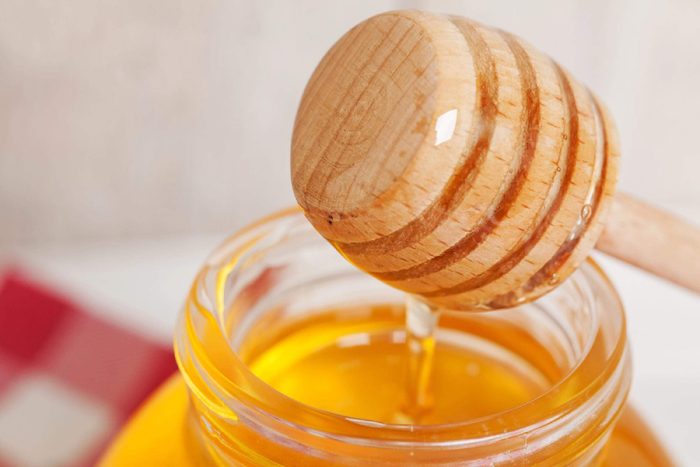
Honey
It’s tan, natural, and comes in a jar with lots of nice health claims. Sorry, but honey, coconut sugar, and brown sugar are all equivalent to regular white sugar when it comes to blood sugar. Agave is basically just as bad. “Agave is slightly different because it’s a little sweeter, so you might use a little bit less of it, but at the end of the day these are all really the same thing as sugar,” says Chaparro. In fact, there is a lot that nutritionists wish you knew about agave, including that a little goes a long way.
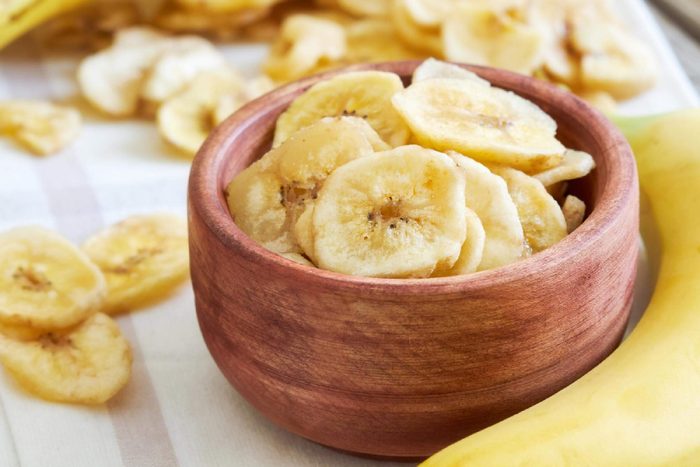
Dried fruit
Fresh is best, and frozen fruit is fine, too. The problem with dried fruit is that the amount of sugar in it gets concentrated during the dehydration process, says Chaparro. “For the general population, it’s much better than eating a candy bar. But people with prediabetes who need to be mindful of carbohydrates should know that a handful of raisins has twice as many carbohydrates compared to a handful of grapes,” she explains. Dried cranberries are even worse because they often have added sugar to combat their naturally tart taste.
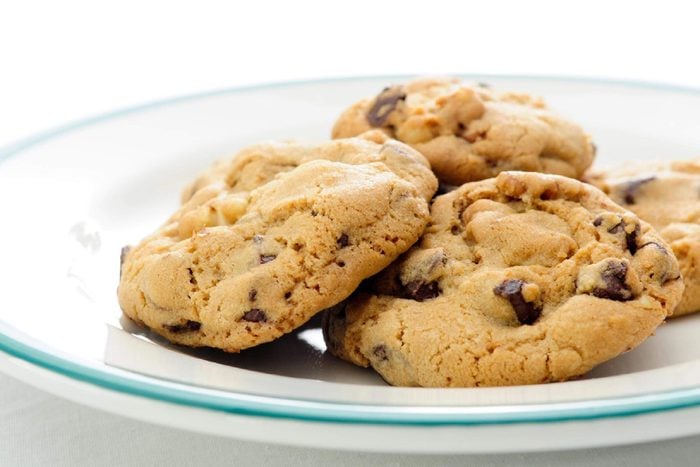
“Sugar-free” packaged foods
“I tell clients to stay away from anything that says ‘sugar-free’ or ‘good for diabetics’ on the package,” says Chaparro. These highly-processed foods—usually snack items like cookies or cakes—tend to contain a lot of unnecessary chemicals as well as extra fat in order to make them taste good. If you’re craving a sweet treat, Chaparro says you’re usually better off having a small portion of the real thing. (Here are some other ideas for diabetes-friendly snacks.)
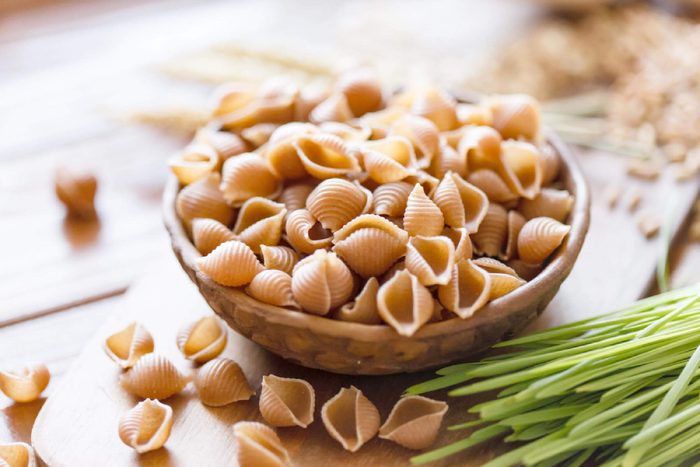
Whole-wheat bread and pasta
These foods aren’t exactly bad for you, and they’re certainly far better than highly refined white bread and white pasta. The problem is that it’s easy to overdo them. “People often think that because they chose a healthy alternative, like whole-wheat bread instead of white bread, that they can eat much more,” says Uelmen. “That’s usually not the case, and foods that contain carbohydrates—even the good ones—will raise your blood sugar.”
Your goal here is to focus on portions. If you’re going to eat pasta, whether it’s white or whole wheat (though whole wheat is better because it has more fiber), enjoy a small amount as a side dish rather than making it your main course. And check out this guide to finding the healthiest bread for you.
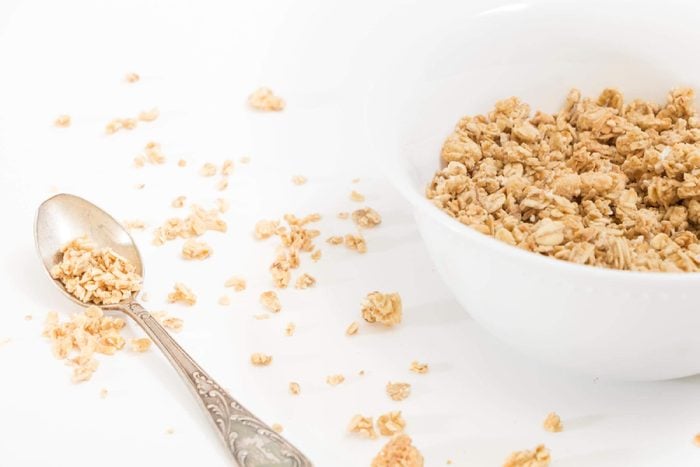
Granola
When you’re checking out your prediabetes diet food list, granola seems like a good idea. “People perceive it as really healthy, but it tends to be really calorically dense and have a lot of carbohydrates,” says Chaparro. “A half-cup might have 45 grams of carbs!” If you love granola, try making your own with some oats, a lot of protein-rich nuts, and just a little bit of brown sugar or sugar substitute. Or skip the granola and power up on one of these high-protein breakfast dishes.

Alcoholic drinks
Wine might be good for your heart, and a cocktail might help you unwind. But keep a careful eye on how much you imbibe: Research has shown that people who consume a lot of alcohol or who are binge-drinkers are at greater risk for developing type 2 diabetes, and since your risk is already elevated thanks to prediabetes it pays to be cautious. While there’s no need to abstain completely (unless your doctor has told you otherwise), be sure to limit your intake to one drink a day for women and two for men, max. Meanwhile, try to pick lower-calorie drinks (like wine or, even better, a spritzer that’s been diluted with seltzer) instead of higher-calorie cocktails. (Keep these other things about alcohol and blood sugar in mind when you’re in the mood to indulge.)

Canned soup
The problem here isn’t sugar but sodium. While not everyone on a prediabetes diet needs to slash salt dramatically, it’s smart to scale back. The reason: People with diabetes—which is where you may be headed—are more likely to develop cardiovascular disease, including high blood pressure, according to a study published in Hypertension, and reducing salt intake can lower that risk. If you haven’t been paying attention to sodium content on nutrition labels, start now.
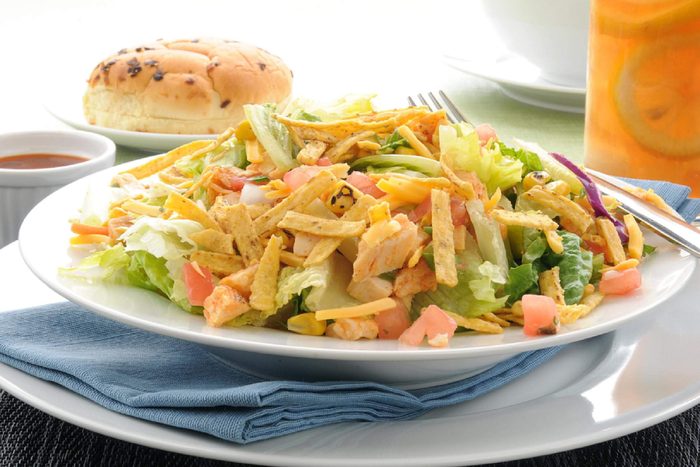
Salad with lots of toppings
A salad is a great pick for a prediabetes diet food list unless you’re ordering a taco salad. Or a crispy chicken salad. Or an iceberg wedge drowning in blue cheese dressing. You get the idea. In short, a salad is only as healthy as what you put on it. “Some chain restaurant salads have up to 1,000 calories,” says Chaparro. “You might be better off having a grilled chicken sandwich with a side salad.” In general, and especially when having a large salad as an entree, go for plenty of colorful veggies, some lean protein (perhaps shrimp or grilled chicken), and steer clear of fatty toppings like cheese and sour cream. If you’re a fan of croutons or creamy dressing, get them on the side so you can add them sparingly. Here’s how diabetics can eat cheese and stay healthy.
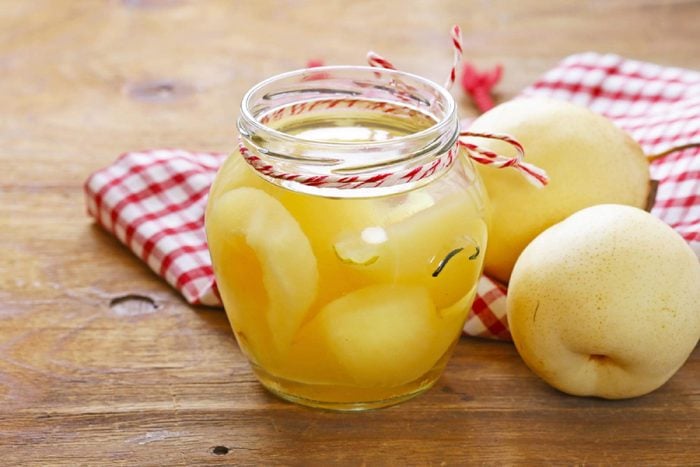
Canned fruit
The fruit part is good, even if it’s preserved rather than freshly-picked. The catch is that so much canned fruit is swimming in thick, sugary syrup. If you like your fruit in a can, look for products packed in fruit juice or light syrup instead.
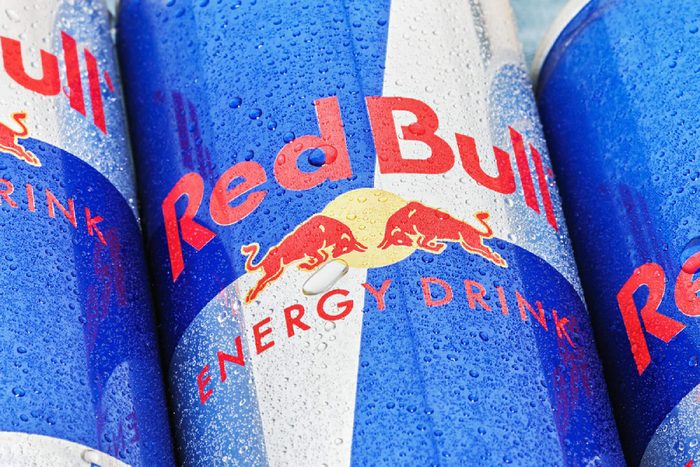
Sports drinks and energy drinks
Anything designed to quench your thirst after exercise has to be healthy, right? Not so fast. You really need to read labels, as many sports and energy drinks are loaded with sweeteners and the extra calories plus carbs will spike your blood sugar. Plain water (maybe flavored with a squeeze of fresh fruit) is usually best after a workout, and if you’re in need of some extra energy try a small coffee with milk. (Then make sure you know these other best and worst drinks for people with diabetes.)
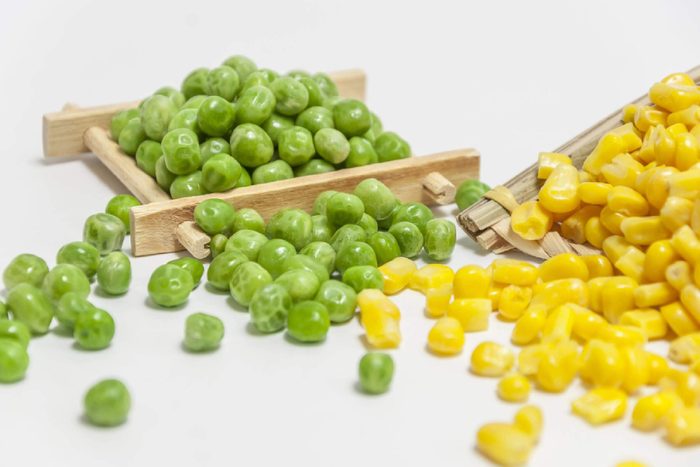
Potatoes, peas, and corn
These starchy veggies aren’t the worst things you could eat, as they deliver important vitamins and minerals. But they do contain carbs, which means they’re going to have an impact on your blood sugar. Leafy greens, cruciferous veggies (like cauliflower and broccoli), and asparagus are often better picks. “In general, most of us need to eat more non-starchy vegetables,” says Uelmen. Here’s a list of low-carb veggies for a prediabetes diet food list so you know what to buy more of the next time you’re at the supermarket.
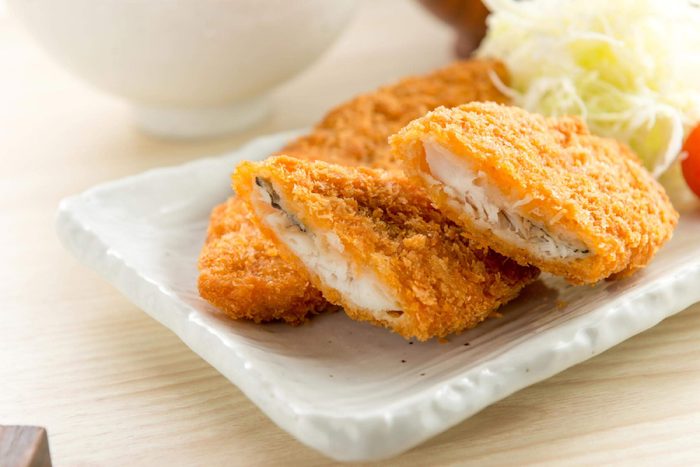
Fried fish
If you ordered fish instead of steak or a burger, pat yourself on the back—unless that fish happens to be deep-fried. Although fat doesn’t raise your blood sugar, it does slow down digestion and may interfere with how your body uses insulin. Stick with grilled, baked, or steamed fish, ideally one (like salmon) that’s rich in omega-3s—fatty acids that might even improve insulin resistance and lower your risk of developing diabetes.
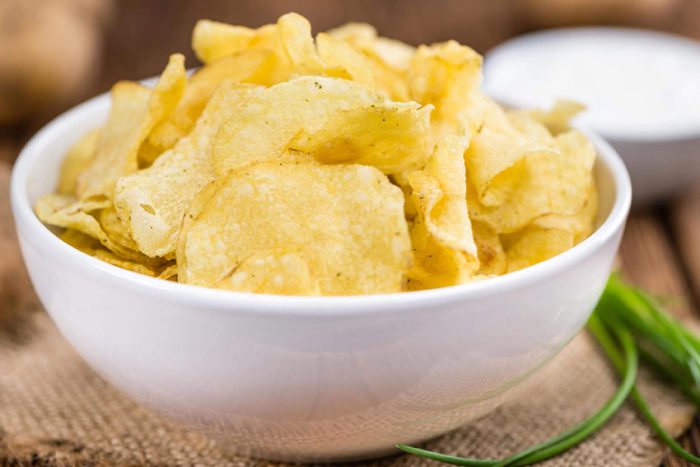
Reduced-fat potato chips
Or salty nuts, sweet gummy bears, or anything else that you tend to overeat. It doesn’t matter if it’s a so-called “healthy” food or not. “If there is a food you enjoy but have trouble eating a reasonable portion, that would probably be a bad choice for you,” says Uelmen. Yes, people with diabetes can eat pizza, for example, but not a lot of it. Trigger foods are personal, so be honest about yours and keep those items out of the house and off your prediabetes diet food list.
Next up: Don’t make these prediabetes weight loss mistakes.
